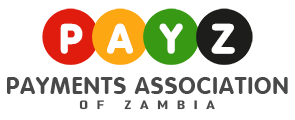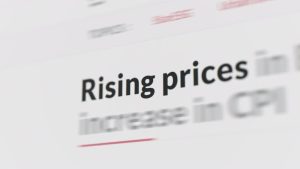Source: UNCDF
Part 1. Why we need consumer protection.
Providers of goods and services often have greater knowledge, power or resources than consumers. Providers may leverage this to dictate the terms of use of their products to their advantage and the consumer’s disadvantage. This is particularly accentuated in the absence of effective competition, when consumers have few or no alternatives to the product or services that are being offered. Conversely, robust competition can incentivize providers to hide the true cost of goods and services in an effort to gain a competitive advantage.
In addition, consumers may face limitations on their ability to make rational, self-interested decisions. In the context of digital financial services, for example, consumers might not fully understand how a financial product works or the consequences that may follow if they are unable to comply with the terms in full. Consumers may also make poor choices due to their vulnerabilities, such as psychological biases or their position (and decision-making autonomy) in their respective households, and these can be exploited by providers. Consumers might run up debt due to a “present bias² towards immediate gratification, or they may take out a payday loan without considering the difficulty of repaying due to a “projection bias.” In recent years, it became apparent that consumers were borrowing extensive digital credit in South Africa, Kenya and Nigeria to spend on sports betting. By 2020, more than a quarter of the consumers reported on by Kenya’s credit reference bureaus had been blacklisted for defaults on loans.
Similarly, a consumer biased about her or his insurance needs (either being over- or under-confident), especially among populations with low financial literacy levels, may end up under- or over-insured and even sometimes be deprived of access to healthcare due to unexpected high costs. Factors pertaining to the insurance providers may also adversely impact consumers. For example, opaque terms and conditions in an insurance contract can leave users unexpectedly unprotected or inadequate prudential requirements can lead to provider insolvency without customer recourse.
Women often feel sidelined and discriminated against by formal financial institutions, which – when coupled with lower financial literacy – can create mistrust that can prevent women from accessing and using different services. In addition, recent research has found that gendered differences in risk perceptions can explain women’s preferences for different types of financial products and that a key determinant of adoption of certain services is trust in financial institutions, which is often lower among women compared to men.
Consumer protection policy seeks to mitigate these factors that impede consumer choice and provide protections for vulnerable consumers.
Relationship to competition policy
The risks to consumers are even higher where there is a lack of competition, and especially in monopolistic markets. In an efficient free market, competition among providers should enable consumers to purchase goods and services at the lowest prices and on the most optimal terms. Competition policy focuses primarily on the supply side of the market, aiming to maximize the range of choices available by optimizing the functioning of markets. Using the same insurance example above, competition policy would focus on how competitive the insurance market is, whether there are any monopolistic tendencies, and whether competitors engage in any anti-competitive behaviour such as collusion, price-fixing and predatory pricing.
Consumer protection policy and competition policy are complementary in striving for the proper functioning of markets and promotion of consumer welfare. Consumer protection addresses dysfunctions on the demand side of the market, aiming to ensure that consumers can exercise their choices effectively, confidently and under fair conditions, and in some cases requiring minimum common standards. In the case of insurance, for example, consumer protection will seek to empower consumers with better information about different insurance offerings so that they understand coverage under each plan, can compare costs and benefits, and can assess the solvency of different providers.
Barriers to optimal consumer choice
Barriers to optimal consumer choice include information and bargaining power asymmetries between consumers and providers that are exacerbated by certain characteristics of human psychology.
Information asymmetries manifest when a provider has greater knowledge and understanding of the specific goods or services or the nature of the market than a consumer and the average consumer cannot invest the time necessary to build countervailing expertise. For example, when borrowing money, consumers may struggle to calculate the true cost of a flat interest vs. declining balance interest loan. Similarly, when deciding which forex bureau to use, consumers may find it difficult to compare the relative cost of two remittance services with different fees and forex rates.
Information asymmetries can also operate in reverse. For example, if providers have insufficient knowledge of a consumer’s ability and willingness to repay a loan, they may exclude certain individuals or groups from access to credit or offer them credit at a much higher cost. A study of microfinance institutions in South Africa found that expanding credit to marginal borrowers increased women’s access relatively more than that of men. This has important implications because women are often less likely than men to be able to borrow from formal sources. Global evidence also demonstrates that private-sector lending increases in countries with better information-sharing and that small and medium enterprises (SMEs) have fewer financial constraints in countries where credit bureaus have been established.
Differences in economic scale can also lead to asymmetries in bargaining power. In many transactions, the consumer has no choice but to agree to one-sided terms and conditions in order to access goods or services. For example, the terms of a life insurance policy or a license to use cloud software are typically non-negotiable. However, with more choices at their fingertips, in theory consumers can more easily and efficiently compare prices and terms, enhancing their bargaining power. Indeed, standardized products intentionally avoid the transaction costs of individual negotiations.
These asymmetries can be further compounded by the effects of human psychology. The field of behavioural economics has found that consumers may be subject to bounded rationality, where flawed memories or limited computational skills can result in bad decisions. Individuals also tend to rely on heuristics or “rules of thumb” when facing complex decisions, or where salient information is obscured in some way. Consumers may also be limited by bounded willpower, choosing to take actions that are attractive in the moment but contrary to their long-term interests. Unscrupulous providers may use these psychological effects to exploit consumers.






